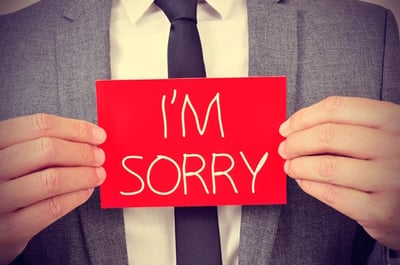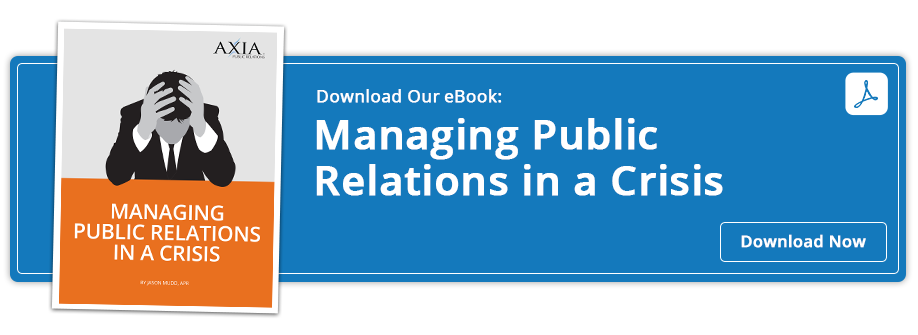 Humans are prone to making mistakes, rash judgements and inappropriate or inaccurate statements. The public relations professionals at Axia often write about crisis communications for the simple fact that far too many people, armed with opinions, inaccurate information and emotionally driven judgment calls, end up in crisis situations. Whether it’s the prime-time anchor of a popular TV show, a CEO, actor or politician, anyone who steps up to a microphone or camera without proper preparation, spouting inaccurate data or carrying a soapbox can turn a smooth-sailing ship into a rudderless boat.
Humans are prone to making mistakes, rash judgements and inappropriate or inaccurate statements. The public relations professionals at Axia often write about crisis communications for the simple fact that far too many people, armed with opinions, inaccurate information and emotionally driven judgment calls, end up in crisis situations. Whether it’s the prime-time anchor of a popular TV show, a CEO, actor or politician, anyone who steps up to a microphone or camera without proper preparation, spouting inaccurate data or carrying a soapbox can turn a smooth-sailing ship into a rudderless boat.
That’s when they call the public relations professionals to the rescue. For the individuals or companies resting at the top of hashtag trends, metered experience rather than opinions or emotional responses are absolutely necessary – especially when an apology is part of the mix. Not all crises warrant an apology, but when one is necessary, a plan or blueprint should already be in place for all crisis team members to refer to at will.
Axia’s version is called the Axia CrisisPoint Apology Model and consists of five key tactics:
-
Confess: State what you did wrong. Be clear, candid and provide enough information to help your audiences understand what led you to making an error. Mea culpa.
-
Rectify: What steps have you already taken to make the situation right? What are your next steps? What short- and long-term measures can your audiences expect? Outline everything in as much detail as possible to prove your efforts to make things better.
-
Prevention/Reformation: Share the long-term/pre-emptive steps you’ll take to ensure that a similar situation doesn’t arise again – ever.
-
Apologize: Don’t simply say “sorry;” genuinely apologize for whatever it was you did. If there is even a hint of disingenuousness, it will be obvious.
-
Seek forgiveness: This is important. Don’t forget to ask for forgiveness from those impacted.
This model isn't set in stone; rather, it serves as a guide to help you shape an effective, sincere apology appropriate to your particular situation. For example, for especially egregious offenses or missteps that negatively affect large numbers of people, you'll want to apologize right away after you confess your error. It's important that your audiences realize that you know you've done wrong.
When it seems apologies are both overused and inconsequential, a genuine effort to prove remorse and offer a solution will, if executed correctly, stand out. We can no longer rest on a simple “I’m sorry.” Instead, we must advance beyond contrition to remedy. In the rare instance calling for sincere regret (due to delivery of inaccurate information, deliberate deceptive practices, etc.), an apology becomes a necessary first step. A properly crafted apology will serve an invaluable purpose and can begin to repair damage done, setting you and your company on a path to full remedy.
For more details, outlines and guidance on how to handle negative situations, download Axia Public Relations’ Managing Public Relations in a Crisis guide.
Featured image credit: 123rf.com
Topics: public relations, crisis communications



Comment on This Article